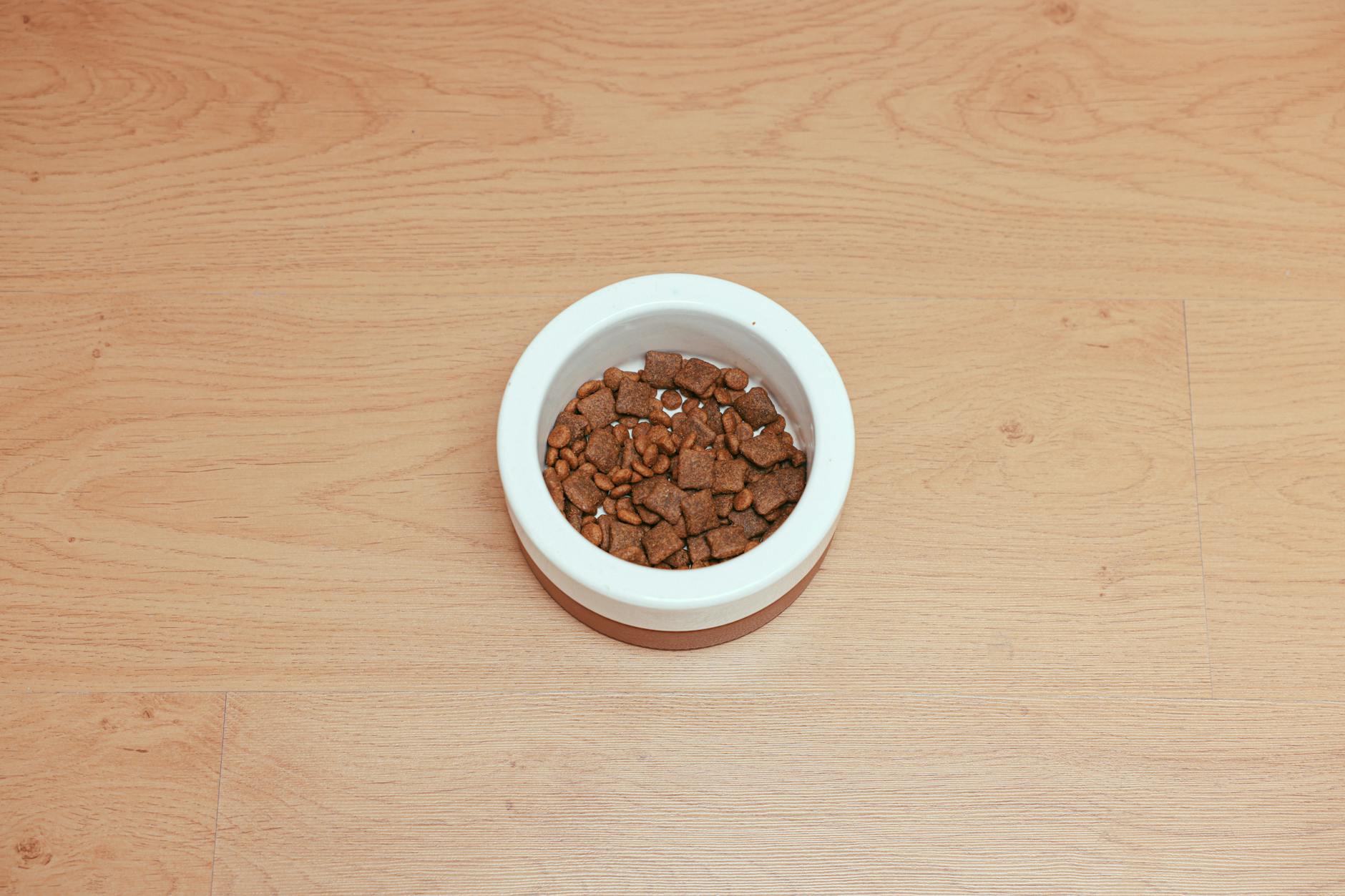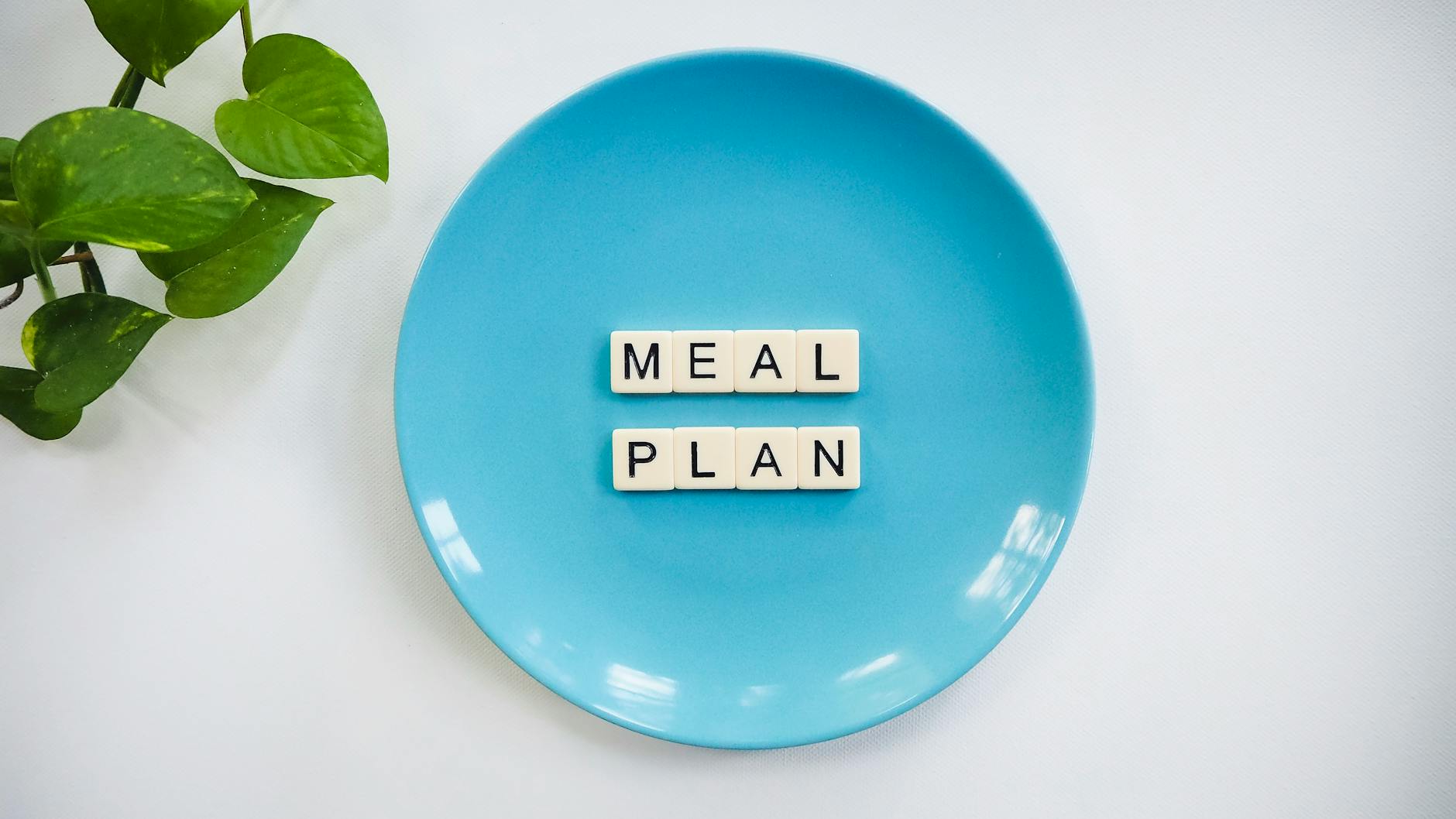Meal Planning for Dogs with Special Diet Needs: A Complete Guide for Owners

Meal Planning for Dogs with Special Diet Needs. Feeding your dog isn’t just about filling a bowl; it’s about supporting their overall health. For dogs with special dietary needs, this becomes even more crucial. Tailoring their meals can boost energy, improve digestion, and even manage chronic conditions.
Proper planning can make all the difference if your pup needs low-fat options or allergy-friendly meals. Learn how a customized diet contributes to their well-being and longevity, ensuring every bite counts. Are you curious about the best ways to start? Explore tips on personalized nutrition like The Farmers Dog Food: A Nutritious Choice to craft the perfect plan for your canine companion.
Understanding Special Dietary Needs in Dogs
A special diet isn’t just a luxury—it’s a lifeline for many dogs. Certain needs call for a tailored feeding approach, whether it’s a health condition, sensitivity, or simply aging. Let’s break it down.
Common Health Issues That Require Special Diets
Health conditions can have a significant impact on your dog’s dietary needs. Some common problems include:
- Food allergies: Often caused by proteins like chicken, beef, or dairy, allergies can lead to itching, vomiting, or diarrhea.
- Diabetes: Requires meals low in simple carbs and rich in protein and fiber to manage blood sugar.
- Obesity: Weight management diets focus on low-calorie, high-nutrient food to shed pounds while maintaining energy.
- Kidney disease: Involves diets low in protein and phosphorus to reduce kidney strain.
Tailoring meals for health concerns isn’t just about choosing better food but serving it in the right portions. Check out expert guides like How to Spot Nutritional Deficiencies in Your Dog to identify specific needs early on.
How Age Influences Dietary Requirements
Age plays a major role in nutrition. What works for a puppy might not be suitable for a senior dog.
- Puppies: Growing pups need calorie-dense, nutrient-rich meals. Think of it as fuel for their rapid growth. Foods with DHA also support brain development.
- Adults: The focus shifts to maintenance. A balanced diet with proteins, healthy fats, and moderate calories keeps them fit.
- Seniors: As energy needs decrease, older dogs benefit from diets with fewer calories and more fiber to support digestion. Joint-friendly supplements like glucosamine can also be a valuable add-on.
Are you looking for puppy-specific foods to start on the right paw? Explore options with Best Puppy Foods Guide.
Identifying Food Allergies and Sensitivities
Spotting a food allergy can feel like finding a needle in a haystack. But knowing the signs can simplify things.
- Common Symptoms: Watch for persistent itching, ear infections, vomiting, or loose stools.
- Elimination Diets: Work with your vet to systematically remove ingredients and pinpoint the culprit.
- Testing and Consultation: Blood or skin tests can offer clues, but professional vet guidance is key.
Wondering how you can act fast? Using resources like Caring for a Pet with Special Dietary Needs provides actionable tips for sensitive stomachs.
Maintaining a balanced, customized diet for your dog isn’t just about avoiding trouble; it’s an investment in a happier, healthier life. Let’s keep digging into how diet can transform their well-being.
Key Components of a Special Diet
Crafting a well-balanced meal plan for dogs with special dietary needs requires understanding the right ingredients to prioritize. Each component is critical in ensuring your dog’s health and happiness, especially when dealing with sensitivities or medical conditions.
Protein Sources Suitable for Special Diets
Proteins are the building blocks of your dog’s diet. However, not all protein sources work for every dog, especially for those with allergies or sensitivities.
- Lean Meats: Chicken, turkey, and fish are excellent options due to their digestibility and lower fat content. They’re often a staple in hypoallergenic diets.
- Novel Proteins: Proteins like venison, rabbit, or duck are significant for dogs with common protein allergies.
- Plant-Based Options: Lentils, chickpeas, and quinoa provide protein for vegetarian diets or dogs allergic to animal protein. These are often blended with other nutrients to ensure balance.
Introducing new proteins? Always observe your dog for any reactions. For more protein-focused dietary options, explore Best Dog Food for Sensitive Stomachs.
Importance of Healthy Carbohydrates and Fats
Carbohydrates and fats are powerhouse nutrients that fuel your dog’s energy and overall well-being.
- Carbohydrates: Sweet potatoes, brown rice, and oats are digestible and easy on the stomach. These options provide energy while minimizing blood sugar spikes for diabetic dogs.
- Healthy Fats: Omega-3 and Omega-6 fatty acids from fish oil or flaxseed promote shiny coats, reduced inflammation, and brain health.
Balancing these nutrients is key. Want more on addressing sensitive tummies with proper carbs? Check out Best Dog Food for Sensitive Stomach and Diarrhea.

Photo by Amina Filkins
Incorporating Vitamins and Minerals
Dogs, like humans, need a range of vitamins and minerals for optimal health. Overlooking these essentials can lead to deficiencies and poor overall health.
- Calcium and Phosphorus: Strengthen bones and teeth. Often included in milk-based supplements or bone meal for dogs with orthopedic concerns.
- Zinc and Selenium: Boost immune function and skin health. Look for these in foods like seeds or specialized supplements.
- Vitamin A, D, and E: Vital for vision, immunity, and cell repair. It is found naturally in fish, vegetables, and egg yolks.
Not sure where to start? External guides like Essential Dog Food Ingredients for Healthy Dogs break it down for easy understanding.
Ensuring your dog gets enough vitamins and minerals can make a noticeable difference in their energy, coat, and overall disposition. Don’t overlook these small yet powerful nutrients!
Meal Planning Strategies for Dogs
Creating a tailored meal plan for your dog isn’t complicated—it’s about consistency, balance, and nutritional awareness. Focusing on these areas ensures your pup gets the right fuel for their health needs. Whether using pre-packaged food or crafting meals from scratch, here’s how to make informed choices.
Creating a Balanced Meal Plan
A balanced diet starts with key components: protein, carbs, fats, fibers, vitamins, and minerals. Each plays a unique role in your dog’s well-being.
- Proteins: These are the building blocks for muscle and cell repair. Lean meats like chicken or turkey are great starters.
- Carbs: Look for digestible ones like sweet potatoes and brown rice. These support energy without causing spikes.
- Fats: Add healthy fats like Omega-3s for a shiny coat and healthy brain function.
- Vitamins & Minerals: Don’t skip calcium for strong bones or Vitamin A for eyesight.
Approach meal planning like preparing your meals—variety is key. Rotate proteins and include fresh veggies when possible.
For inspiration, explore the benefits of options like Ollie Human-Grade Dog Food, which can simplify this process with pre-designed plans tailored to your dog’s needs.
Using Pre-Packaged Dog Food vs. Homemade Meals
When planning meals, you must weigh the benefits of pre-packaged foods against homemade options. Each has its place, depending on your time, budget, and expertise.
Pre-Packaged Dog Foods:
- Pros: Convenient, nutritionally balanced (if choosing high-quality brands), and easy to store.
- Cons: Less control over ingredients and potential additives, and more expensive than homemade meals.
Homemade Meals:
- Pros: Full control over what goes into your dog’s bowl. Great for allergies or special needs.
- Cons: Time-consuming and requires thorough research to avoid nutrient deficiencies.
Not sure where to start with homemade options? Helpful resources like DIY Dog Meal Prep Tips can provide easy-to-follow ideas.
Both homemade and pre-packaged food can work well when balanced correctly. The choice often comes down to your dog’s specific dietary needs and your lifestyle.
Portion Control and Feeding Schedule
Feeding your dog isn’t just about what’s in the bowl—it’s about how much and when. Portion sizes and a consistent schedule are essential, especially for dogs with dietary restrictions.
- Portion Sizes: Overfeeding can lead to obesity and joint stress. Measure portions based on your dog’s size, weight, and activity level.
- Feeding Schedule: Establish regular times, like twice daily for most adult dogs or multiple smaller meals for puppies.
- Monitor Appetite: If your dog regularly leaves food behind, reduce portions. A clean bowl often signals you’re hitting the right amount.
Consistency also helps your dog feel secure, knowing when to expect meals. Check out guides like Best Dog Food for Every Breed for tailored recommendations based on age and breed.

Photo by MART PRODUCTION
A well-thought-out meal schedule and portion sizing support your dog’s health and keep them at their optimal weight.
Resources for Dog Owners
When it comes to meal planning for dogs with special diet needs, having the right resources can make the whole process much more manageable. From consulting experts to utilizing technology and reliable products, there’s a wealth of information designed to help you give your canine companion the best nutrition possible.
Consulting with Veterinarians and Nutritionists
Professional guidance is the cornerstone of any specialized meal plan. Veterinarians and pet nutritionists can assess your dog’s unique health conditions and recommend specific diets tailored to their needs.
Why is this critical? Missteps in your dog’s diet can lead to long-term health issues. For example, overloading protein might harm dogs with kidney disease, while lacking essential nutrients could mean deficiencies over time.
Some tips for consulting professionals:
- Be Honest: Share your dog’s health history, including any potential weight or allergy concerns.
- Bring Records: If possible, provide medical test results or food intake logs to aid the consultation.
- Ask Questions: Confirm portion sizes, feeding schedules, and supplement needs.
For more ideas on how to care for your dog’s specific needs, check out Discover The Best Types For Every Lifestyle for insights on breed-specific considerations.
Online Tools and Apps for Meal Planning
Modern technology offers dog owners easy ways to create, track, and adjust meal plans. Online tools and mobile apps are great for simplifying the process of planning a dietary regime or checking ingredient suitability for your pet.
Some helpful platforms include:
- Customized Food Services: The Farmers Dog Food specializes in creating customized, nutritious dog meals delivered straight to your door.
- Recipe Calculators: Many apps calculate portions for homemade meals, ensuring all nutritional needs are met.
- Dietary Monitoring Apps: Apps tracking allergic reactions or health improvements can guide future meal planning efforts.
These tools are like having an assistant in your pocket, making your job as a loving pet owner a little easier.

Photo by Mathew Coulton
Recommended Special Diet Products
Choosing the right products for your dog’s diet is critical. The wrong food could fail to meet your furry friend’s needs and exacerbate existing issues.
Here are some trusted options for dogs with special diet needs:
- Ollie Human-Grade Dog Food: This product is known for its fresh, minimally processed meals, perfect for dogs requiring high-grade nutrition.
- Hypoallergenic Options: Seek out brands specializing in single-source proteins and minimal additives.
- Prescription Diet Brands: Veterinarian-recommended options for specific health conditions, like kidney or liver issues, can often be found through professional clinics.
For more information on tailored nutritional choices, look at the Best Dog Food for Sensitive Stomachs, which includes various options for dogs with dietary sensitivities.
Having both professional advice and technological tools at your disposal makes catering to your dog’s specific needs easier and more effective. Stay informed and make the most of these resources to keep your canine companion happy and healthy!
Success Stories: Dogs Thriving on Special Diets
Regarding dogs with special dietary needs, real-life stories show just how transformative the proper nutrition can be. From overcoming allergies to revitalizing senior pets, these examples are proof of the powerful connection between diet and well-being.
Case Study: Overcoming Food Allergies
Imagine discovering your dog’s constant itching, ear infections, and belly issues all stemmed from something as simple as their food. This became a defining moment for Bella, a German Shepherd with severe food allergies. After months of trial and error, her owner worked alongside a veterinarian to transition her to a hypoallergenic diet featuring novel proteins like venison.
The results? Night and day. Within weeks, Bella’s skin cleared up, her energy levels improved, and her coat became shiny and soft. Her owner reports no more frantic scratching or surprise vet visits. If you’re facing similar challenges, you’re not alone—others have seen marked improvements with dietary changes. For more inspiration, check out Dogs Thriving on Homemade, Health-Focused Diets.

Photo by Cup of Couple
Transforming Senior Dogs’ Health
Senior dogs like Max often face reduced mobility, waning energy, and digestive troubles. At 12 years old, Max’s stiff joints and low appetite made his family worry he was approaching the end of his life. However, a vet-directed switch to a senior-specific diet with added glucosamine and omega-3s worked wonders.
Within months, Max played in the yard again, and his appetite returned. His improved activity and reduced pain extended his golden years beyond what his owners expected. Max’s story is a vivid reminder: the proper diet isn’t just a fix—it’s a second chance.
For senior dogs needing extra care, learn how specific nutrients can make all the difference by exploring Best Dog Food for Boxers, which includes valuable insights for aging breeds.
FAQ About Meal Planning for Dogs with Special Diets
Meal planning for dogs with special dietary needs can feel overwhelming at first. You might find yourself asking a lot of questions: “Am I giving the right foods?” “How much should I feed?”, or “How do I know this diet is working?” This section tackles those common concerns so you can confidently meet your dog’s needs.
How Can I Tell if My Dog Needs a Special Diet?
Dogs need special diets for various reasons, including health conditions, age, and specific breed needs. Look for these signs:
- Digestive issues: Consistent diarrhea, vomiting, or constipation may indicate dietary intolerance.
- Allergic reactions: Itchy skin, constant ear infections, or licking paws could point to food allergies.
- Energy changes: Sudden lethargy or hyperactivity can also relate to diet.
Still unsure? Learn how to spot dietary deficiencies in dogs by checking out How to Spot Nutritional Deficiencies in Your Dog.
How Do I Choose the Right Food?
With so many options, picking the right food can feel like solving a puzzle. Here’s what to consider:
- Look for foods that match specific dietary requirements, like low-fat or hypoallergenic options.
- Read labels to identify unwanted fillers or preservatives. Stick to simple, wholesome ingredients.
- Use trusted brands or recipes approved by veterinarians or pet nutritionists.
For more guidance, refer to Dog Food FAQs for tips on making informed decisions.
How Often Should I Feed My Dog?
Feeding frequency depends on your dog’s age, breed, and health:
- Puppies: 3–4 small meals daily as their metabolism is fast.
- Adults: Typically, 2 equally spaced meals are ideal.
- Seniors: Smaller meals more frequently can help with digestion and energy balance.
Stick to consistent schedules. If you’re experimenting, resources like Feeding Your Adult Dog FAQ discuss feeding intervals in depth.
What if My Dog Doesn’t Like the Food?
Dogs can be picky, especially during diet transitions. Here’s how to encourage eating:
- Gradually mix new food with their old diet over 7–10 days.
- Warm the food slightly to make it more aromatic.
- Add a small topper like plain cooked chicken or bone broth.
Struggling to make it work? Check out options for dogs with challenging palates by visiting Best Dog Food for Sensitive Stomachs.
How Will I Know the New Diet Is Helping?
Diet changes can take time to show results. Some things to track include:
- Energy Levels: Noticeable improvements often mean you’re on the right path.
- Skin and Coat Health: Shiny fur and reduced dryness suggest better nutrients.
- Stools: Better consistency signals good digestion.
Keep observing closely, and always consult a vet if you’re unsure. For related tips, visit FAQs on Dog Food Advisor.
Photo by Vegan Liftz
Conclusion
Catering to your dog’s unique dietary needs is a commitment that yields long-term benefits for their health and happiness. A proper meal plan addresses medical concerns and ensures they thrive at every life stage.
Balancing proteins, carbs, and nutrients while factoring in individual preferences is essential. Start exploring high-quality options like Discover The Benefits Of Ollie Dog Food Today to simplify meal planning.
Feeling equipped to make changes? Begin with small steps and observe how your dog responds. Review guides like Dog Food For Health Issues for more meal planning ideas.
Your dog’s health starts with your choices. Please take action today and watch them thrive.







Thanks for sharing. I read many of your blog posts, cool, your blog is very good.